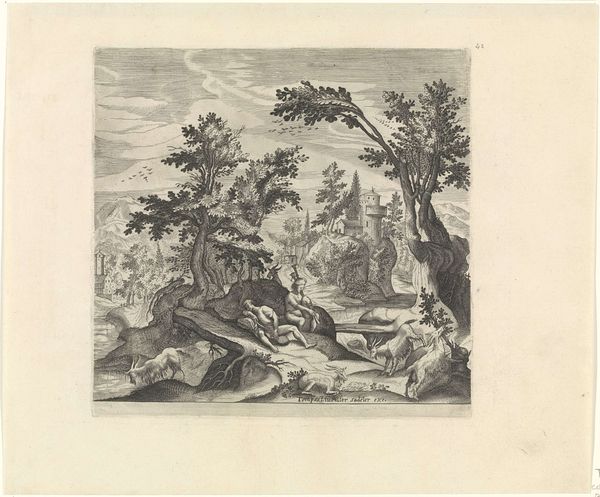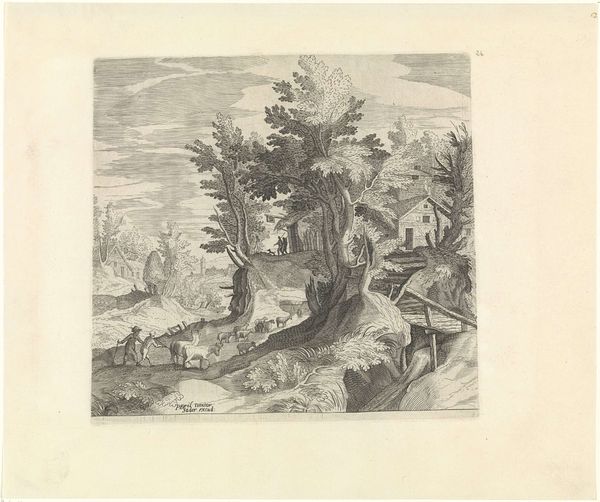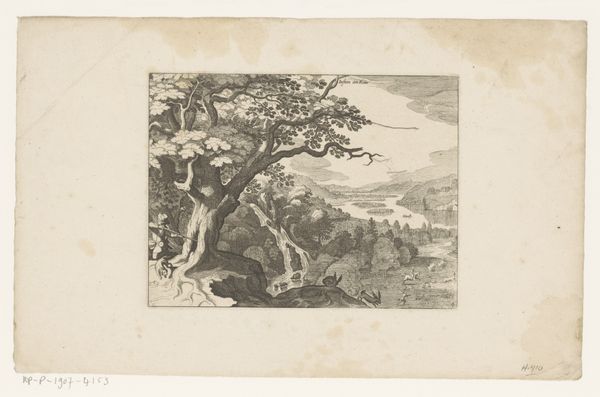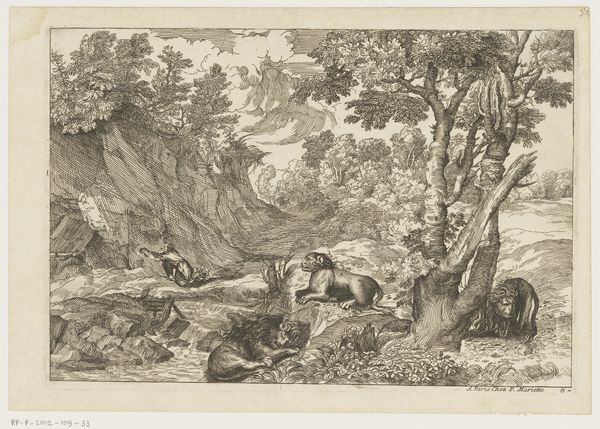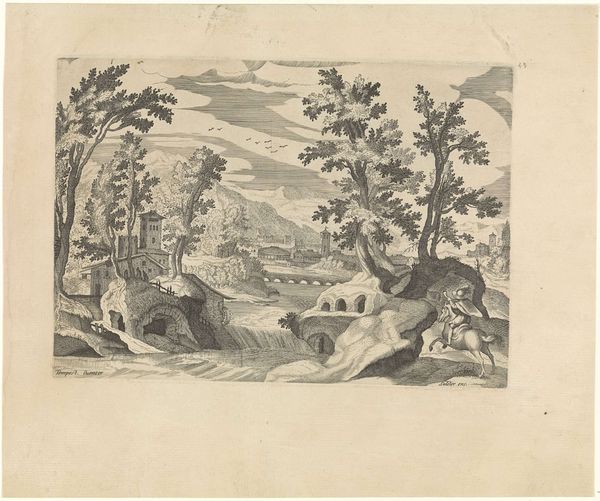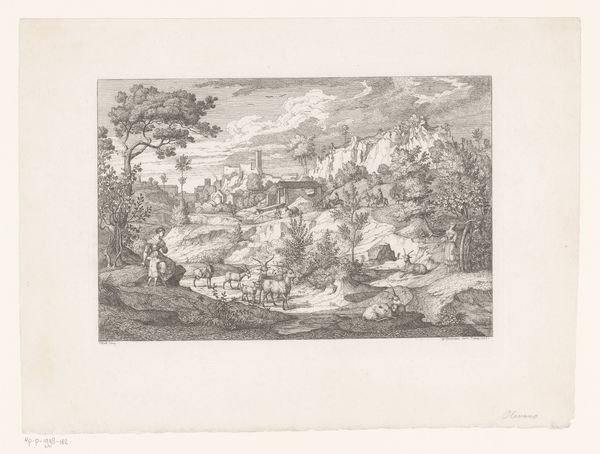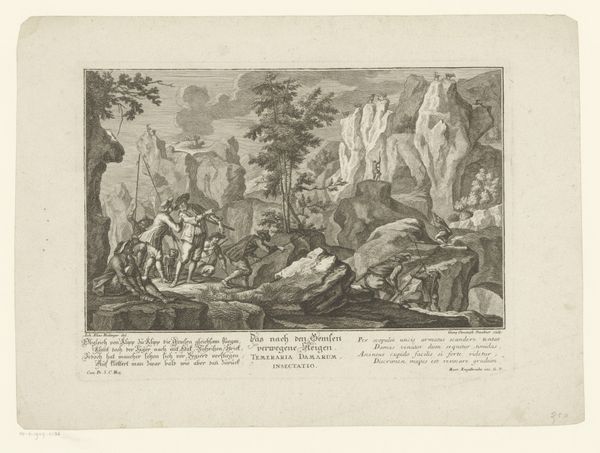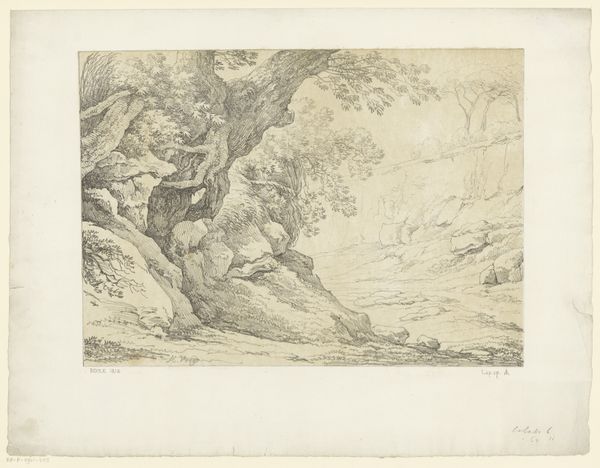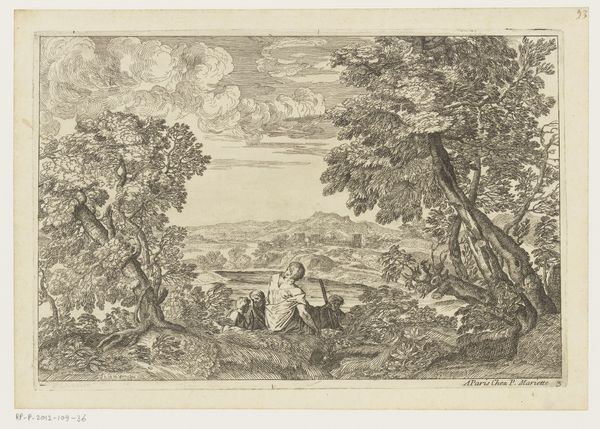
print, engraving
#
medieval
# print
#
old engraving style
#
landscape
#
form
#
line
#
cityscape
#
northern-renaissance
#
engraving
#
realism
Dimensions: height 200 mm, width 205 mm
Copyright: Rijks Museum: Open Domain
Curator: At first glance, there’s a quiet drama to this image, wouldn't you say? The deep etching and strong contrast create a surprisingly immersive space. Editor: Indeed. Here we have "Landscape with Two Hunters," an engraving made sometime between 1580 and 1600 by Johann Sadeler I. It is currently held at the Rijksmuseum. Curator: The landscape feels deliberately arranged, a careful balance of light and shadow that directs your eye along that winding road. Editor: It is a very calculated perspective. Notice the placement of the hunters, nearly dwarfed by the sheer size of the natural elements and architectural detail—an explicit demonstration of man’s dominion. Curator: Or perhaps his insignificance? It is that tension that keeps the eye moving; the contrast in textures, from the roughness of the trees to the precision of the distant city. These parallel realities heighten the composition’s effect. Editor: It does recall the era’s obsession with mapping and representing the world; not just geographically, but politically. We can certainly contextualize this with other examples of late 16th-century land ownership depicted similarly, emphasizing a sense of control over both nature and the peasant class that worked it. Curator: Setting aside such contextual frameworks for a moment, one cannot deny the artwork's visual allure. Consider the linear precision, for example—the crispness of the engraving itself creating this incredibly luminous effect on the page, giving it depth. Editor: Yes, but such decisions concerning the formal elements serve particular functions in terms of the work’s initial audience, of course. Without understanding its cultural purpose, that “luminous effect” might just appear… decorative. Curator: Well, sometimes the purely aesthetic qualities can evoke plenty on their own, independent of whatever meaning the patron originally had in mind! Ultimately, an engagement with form is simply the beginning of analysis. Editor: But without grasping this artwork's social reality, our interpretation is destined to miss half the story. Curator: And vice versa—focusing solely on external reality, you would undermine what truly sets the engraving apart as a fine piece. Thank you for that illuminating exchange. Editor: An intriguing debate, indeed.
Comments
No comments
Be the first to comment and join the conversation on the ultimate creative platform.
